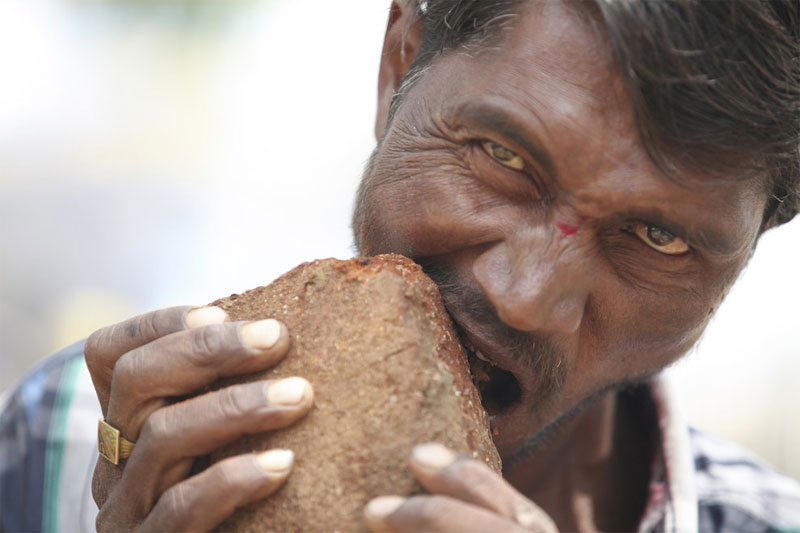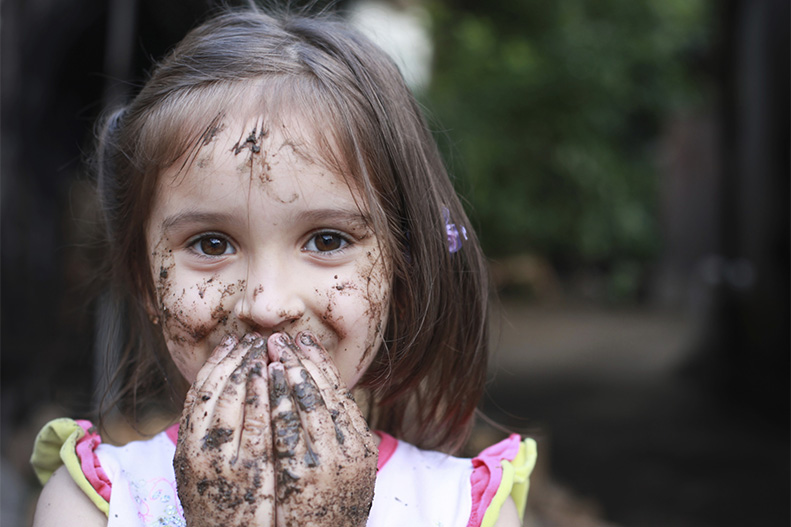Do you like to eat non-food items? If so, you may be suffering from PICA disorder. This rare eating disorder is characterized by an obsession with eating non-food items. People with PICA often crave and eat things that are not food, such as ice, dirt, paint chips, or hair. While the cause of PICA is unknown, it is believed to be related to a deficiency in certain minerals or nutrients. If you think you may have PICA disorder, it is important to get help right away. In this blog post, we will discuss everything you need to know about this condition.
Contents
What Is PICA Disorder?
PICA disorder is a rare eating disorder that is characterized by an intense craving for non-food items. The most common items that are craved include dirt, clay, chalk, sand, ashes, paper, paint chips, and even hair. In some cases, people with PICA disorder may also eat ice chips or ice cubes.
PICA disorder is most commonly diagnosed in children between the ages of two and four years old. However, it can also be seen in adults. PICA disorder is more common in females than males and is seen more often in African American children than Caucasian children.
The exact cause of PICA disorder is unknown. However, several theories have been proposed. One theory suggests that PICA disorder may be caused by a deficiency in iron or zinc. Another theory suggests that PICA disorder may be a result of abnormal functioning of the hypothalamus.
PICA disorder can have serious consequences if left untreated. Individuals with PICA disorder may suffer from malnutrition due to their lack of intake of nutrients. In addition, PICA disorder can lead to gastrointestinal issues such as constipation, diarrhea, and intestinal blockages.
If you think that you or your child may have PICA disorder, it is important to speak with a doctor or mental health professional. They will be able to properly diagnose and treat the condition.
Signs of PICA Disorder

There are many signs and symptoms associated with PICA disorder, but they can be broadly divided into three main categories:
- Physical symptoms
- Behavioral symptoms
- Psychological symptoms
Stomach Pain
Stomach pain is one of the most common physical symptoms associated with PICA disorder. This is because the individual is constantly ingesting non-food items that can cause irritation and inflammation in the stomach. Also, many sharp objects can cut or puncture the stomach lining. There may be other causes of stomach upset associated with PICA disorder, such as intestinal blockages or constipation.
Constipation
Another common physical symptom associated with PICA disorder is constipation. This is because the individual is not consuming enough food and fiber to keep their digestive system functioning properly. In addition, the non-food items that are being consumed can cause blockages in the intestines. It may also be difficult for the individual to pass stool due to the irritation and inflammation in the digestive system.
Weight Loss
Another common physical symptom of PICA disorder is weight loss. This is because the individual is not consuming enough calories and nutrients to support their body weight. In addition, the individual may also suffer from malnutrition due to their lack of intake of essential nutrients.
Diarrhea
Diarrhea is another common physical symptom of PICA disorder. This is because many of the non-food items consumed by individuals with PICA are contaminated with bacteria or other harmful substances. These substances can cause inflammation and irritation in the intestine, leading to diarrhea. There can be other causes of diarrhea associated with PICA disorder, such as intestinal blockages or constipation.
Behavioral Signs
There are many behavioral symptoms associated with PICA disorder. One of the most common behavioral symptoms is pica-related behaviors. This includes the act of eating non-food items, such as dirt, clay, sand, paper, paint chips, hair, etc. Individuals with PICA may also engage in other pica-related activities such as handling or playing with non-food items.
Another common behavioral symptom associated with PICA disorder is avoidance behavior. This includes avoiding foods that are considered to be “safe” or “normal” to eat. Individuals with PICA may avoid fruits and vegetables because they are afraid of eating them. They may also avoid meats and dairy products because they contain high levels of fat and cholesterol.
Causes of Pica Disorder

There are many causes of PICA disorder, and it is often difficult to pinpoint a single cause. However, some risk factors seem to be associated with the development of PICA disorder. These include:
Pregnancy
Pregnancy is a major risk factor for the development of PICA disorder. This is because pregnant women have an increased appetite and may crave non-food items. In addition, pregnancy can lead to nutritional deficiencies that can trigger PICA disorder. Also, pregnant women may be more likely to engage in pica-related activities due to the increased levels of hormones. There may be other causes of PICA disorder, but these are the most common.
Childhood
Another major risk factor for PICA disorder is childhood. This is because children are more likely than adults to eat non-food items. In addition, childhood can lead to nutritional deficiencies that can trigger PICA disorder. Also, children may be more likely to engage in pica-related activities due to their curiosity and lack of understanding of what is safe to eat. Childhood is also a time when many developmental and psychological disorders can develop.
Anorexia Nervosa
Anorexia nervosa is an eating disorder characterized by extreme weight loss and a fear of gaining weight. Individuals with anorexia nervosa may engage in pica-related activities as a way to avoid gaining weight.
Bulimia Nervosa
Bulimia nervosa is an eating disorder characterized by bingeing and purging behaviors. Individuals with bulimia nervosa may eat large amounts of food and then purge it through vomiting or using laxatives. Bulimics may also engage in pica-related activities as a way to avoid gaining weight.
Obsessive-Compulsive Disorder
Obsessive-compulsive disorder is a mental disorder characterized by obsessions and compulsions. Individuals with OCD may have obsessions with dirt and contamination. They may also have compulsions to clean and wash their hands excessively. OCD can also lead to pica-related behaviors as a way to reduce the anxiety associated with the obsessions.
Genetics
Genetics are also thought to play a role in the development of PICA disorder. This is because the disorder seems to run in families. If you have a family member with PICA disorder, you may be more likely to develop the disorder yourself.
Negative Impacts of PICA Disorder

There are many negative impacts of PICA disorder, both on the individual and those around them. PICA can lead to serious health problems, including malnutrition, digestive issues, and even death. It can also cause social isolation and strained relationships. If you or someone you know has PICA disorder, it is important to seek professional help.
Some of these negative impacts are:
Health Problems
Some serious health problems can be caused by PICA. These include:
Malnutrition: When an individual craves and eats non-food items, they are not getting the nutrients that their body needs. This can lead to serious health problems, including malnutrition.
Digestive Issues: Eating non-food items can cause digestive issues, such as constipation or diarrhea. In some cases, it can even lead to intestinal blockages.
Death: In rare cases, PICA can be fatal. This is most often due to complications from eating poisonous substances or choking on foreign objects.
Social Isolation
PICA can also lead to social isolation. Individuals with PICA may withdraw from friends and family due to embarrassment or shame about their disorder. They may also miss work or school due to their illness, which can make it difficult to maintain social relationships. There can also be many financial difficulties associated with PICA.
Strained Relationships
PICA can put a strain on relationships. The constant cravings and eating of non-food items can be disruptive and distressing for both the individual with PICA and their loved ones. These strained relationships are also many of the financial difficulties associated with PICA. It may have an impact on an individual’s quality of life.
Impacts Quality of Life
PICA is a disorder that can have a significant impact on an individual’s quality of life. The constant cravings and eating of non-food items can be disruptive and distressing. It can lead to serious health problems, social isolation, and strained relationships. If you or someone you know has PICA disorder, it is important to seek professional help.
Diagnosis of PICA Disorder
The diagnosis of PICA disorder is not always easy. It can be difficult to distinguish between PICA and other eating disorders or simply normal eating habits. A diagnosis is usually made by a mental health professional after a thorough evaluation. The evaluation may include a physical exam, psychological assessment, and laboratory tests to rule out other possible causes of the person’s symptoms.
PICA disorder is more likely to be diagnosed in children than adults. This may be because PICA often occurs alongside other mental health disorders in children, such as autism spectrum disorder or attention-deficit/hyperactivity disorder (ADHD). In adults, PICA often co-occurs with schizophrenia or intellectual disability.
It also seems to be more common in women than men.
PICA is considered a rare disorder, but its prevalence is not known because it often goes undiagnosed.
Treatment of PICA Disorder
There is no specific treatment for PICA disorder, but there are some interventions that can help to reduce or eliminate pica-related behaviors. These include:
Medications
Medications are effective in treating pica, but they may help reduce associated symptoms such as anxiety or obsessive-compulsive behaviors. There are some medications like risperidone that are effective in treating pica. There are many benefits of medication but there are also some risks and side effects to consider.
Therapy
Therapy is one of the most effective treatments for PICA disorder. It can help to identify and address any underlying psychological issues that may be contributing to pica behaviors. Therapy can also help to teach new coping and problem-solving skills.
There are many types of therapies for treating PICA disorder:
Behavioral Therapy
Behavioral therapy is a type of treatment that is often used to treat this disorder. This type of therapy helps to change the way an individual thinks and feels about food and non-food items. It also teaches the individual how to cope with their cravings and urges more positively. There maybe be some exposure therapy involved in behavioral therapy, which is when the individual is exposed to non-food items in a controlled environment.
Cognitive Behavioral Therapy
Cognitive-behavioral therapy (CBT) is a type of treatment that combines behavioral and cognitive therapies. This type of therapy helps to change the way an individual thinks about food and non-food items. It also helps to change the way they cope with their cravings and urges. CBT may also involve exposure therapy.
Family Therapy
Family therapy is a type of treatment that involves the whole family in treatment. This type of therapy can help to improve communication and relationships within the family. It can also help to identify and manage triggers for PICA behaviors. It also helps to teach the family how to support the individual with PICA disorder.
Interpersonal Therapy
Interpersonal therapy is a type of treatment that focuses on the relationships between the individual and other people in their life. This type of therapy can help to improve communication and social skills. It can also help to identify and manage triggers for PICA behaviors.
Psychodynamic Therapy
Psychodynamic therapy is a type of treatment that focuses on exploring the unconscious mind. This type of therapy can help to identify any underlying issues that may be causing PICA behaviors. It can also help to improve self-esteem and self-awareness.
Nutritional Therapy
Nutritional therapy is another type of treatment that can be used to treat PICA disorder. This type of therapy focuses on providing the individual with the nutrients they need. It also helps to identify and avoid trigger foods. Nutritional therapy can also help to improve overall health and well-being.
Environmental Modifications
Making changes to the environment can help reduce pica behaviors. This may include removing potential sources of non-food items from the home or workplace or providing alternative activities to engage in when the urge to eat non-food items arises. It is also important to provide close supervision to individuals with PICA disorder, especially children.
Support Groups
Support groups can provide a space for people with PICA disorder to share their experiences and offer support and advice to one another. These groups can be a valuable resource for both those with PICA disorder and their loved ones. There are many online and in-person support groups available.
Self-Help Strategies
Many self-help strategies can be effective in managing PICA disorder. Some self-help strategies include:
Identifying triggers
Triggers are things that can cause someone to engage in pica behaviors. Identifying personal triggers can help to avoid or manage them. Sometimes triggers are one-time events, such as stress or boredom. Other times, triggers can be ongoing, such as living in a chaotic or unpredictable environment.
Developing a plan
Once triggers are identified, it can be helpful to develop a plan for how to avoid or manage them. This may include having a list of alternative activities to do when the urge to eat non-food items arises or avoiding situations that are likely to trigger pica behaviors.
Building coping skills
Coping skills are tools that can help us deal with difficult emotions and situations. Some helpful coping skills include relaxation techniques, journaling, and exercise. Practicing these coping skills regularly can help to reduce pica behaviors.
Practicing relaxation techniques
Relaxation techniques like deep breathing and meditation can help to reduce stress and anxiety, which may be triggers for pica behaviors. Many relaxation techniques can be learned from books, videos, or online resources.
Exercising
Exercise is a great way to reduce stress and improve mental health. It can also help to distract from cravings and urges to eat non-food items. Exercise can be anything that gets the body moving, such as walking, running, biking, swimming, or dancing.
Avoiding trigger foods or situations
Sometimes some situations or foods can trigger pica behaviors. It may be helpful to avoid these triggers altogether. If avoiding triggers is not possible, it is important to have a plan for how to cope with them if they do arise.
Eating a balanced diet
Eating a balanced diet is important for overall health and well-being. It is especially important for people with PICA disorder because poor nutrition can worsen symptoms. A balanced diet includes eating a variety of healthy foods from all food groups in moderation.
Getting enough sleep
Sleep is crucial for our physical and mental health. Getting enough sleep can help to reduce stress and improve concentration and focus. It is important to aim for seven to eight hours of sleep per night.
Reducing stress
Stress can be a trigger for pica behaviors. It is important to find ways to reduce stress in your life. Some helpful stress-reduction techniques include exercise, relaxation techniques, and journaling.
How To Manage PICA Disorder?
Managing PICA disorder is not easy. The first step is to find the underlying cause of the disorder. If it is due to a nutrient deficiency, then correcting the deficiency may help reduce or eliminate the cravings. If PICA is due to an emotional problem, such as boredom, stress, or anxiety, then treating the emotional disorder may also help reduce or eliminate the cravings.
In some cases, simply avoiding eating non-food items may be enough to manage PICA disorder. If a person with PICA craves dirt, for example, they can avoid contact with dirt and other potential sources of contamination. If someone with PICA craves ice chips, they can avoid going to places where ice is readily available (such as restaurants).
How To Help Someone With PICA Disorder?

Helping someone with PICA can be difficult. The first step is to make sure that the person with PICA is safe. If they are eating something that could potentially hurt them, you need to get them to stop immediately and seek medical attention if necessary. Once you know the person with PICA is safe, you can start to help them by:
Encouraging healthy eating habits and a balanced diet
Encouraging healthy eating habits and a balanced diet is important for everyone, but it is especially important for people with PICA. This disorder can often lead to nutritional deficiencies, so it is important to make sure that the person with PICA is getting all the nutrients they need.
Helping them avoid trigger foods
If certain foods seem to trigger the person’s PICA urges, it is important to help them avoid those foods. This can be difficult, but it is important to try to find a way to do it.
Providing support and understanding
People with PICA often feel isolated and alone. It is important to provide them with support and understanding. This can be difficult, but it is important to try to find a way to do it.
Encouraging professional help
You should also encourage the person with PICA to seek professional help. This can be difficult, but it is important to try to find a way to do it. Professional help can often make a big difference in the lives of people with PICA.
If you or someone you know has PICA, there is help available. There are many resources out there that can provide support and information about this disorder. Seek professional help if you or someone you know is struggling with PICA.
Conclusion
Pica Disorder is a rare eating disorder that can be extremely harmful if left untreated. If you or someone you know is displaying signs of PICA Disorder, it is important to seek professional help as soon as possible. With proper treatment, those suffering from PICA Disorder can lead happy and healthy lives.
If you think you may have PICA Disorder, please speak with your doctor or contact a mental health professional for an evaluation. Remember, you are not alone and there is help available. Thank you for reading. We hope this article was helpful.
If you are looking for affordable Online Counseling MantraCare can help: Book a trial therapy session


